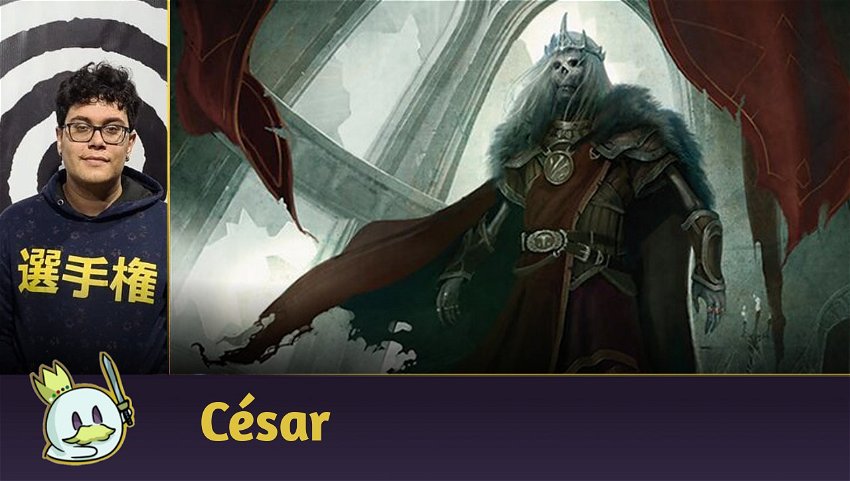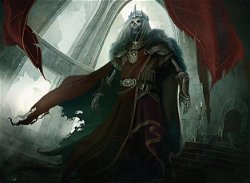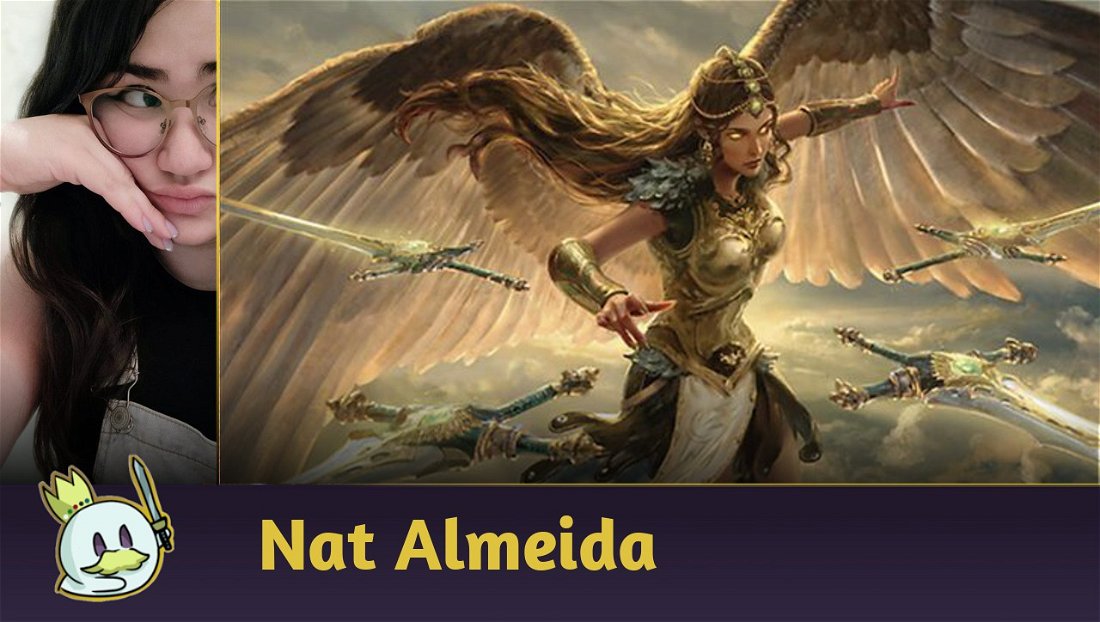Introduction
In today's Deck Tech, we have one of the pioneers in Commander, which was once one of the most popular commanders; the iconic skeleton Nekusar, the Mindrazer!
Time made it possible for Nekusar to have access to several cards that boost its ability quite a lot. Today, let's take a look at what this friendly commander, which helps your opponents by drawing them cards, can provide us.
Commander and Mechanic
Nekusar, the Mindrazer was in one of the first Commander precon decks, and was famous for winning in a completely unconventional way - forcing your opponents to draw cards. This deck is based on its ability to deal damage as your opponents draw cards, and boosting this damage through support cards and other resources to draw even more cards.
Ad

The Grixis 


Nekusar, the Mindrazer List and Deck Strategy
We'll show a list with no budget, so we can access the more expensive cards, and a budget list (at the end of the article), which, even though it doesn't have access to those expensive cards, can wreck as much havoc and be as lethal as the first one. This deck doesn't win through combat damage, and works exclusively dealing damage when an opponent draws cards with this commander and other cards.
Accelerators

Nekusar has a relatively high cost, as this deck doesn't use Green, so using this amount of mana rocks might seem like too much, but it is essential considering how this commander works nowadays.
After all, in a deck without Green, having your 5-cost commander removed as soon as it is cast, and then being forced to pay 7 mana and risk having the same thing happen again is, understandably, very frustrating.
With that in mind, we use the classic Sol Ring kit alongside Signets and Talismans: Arcane Signet, Rakdos Signet, Izzet Signet, Dimir Signet, Talisman of Indulgence, Talisman of Creativity and Talisman of Dominance.
Due to how we keep many cards in hand, we also use Thought Vessel. Finally, we have Fellwar Stone to get even more rocks and Nightscape Familiar, to reduce costs in general.

Draw Engines

As this deck is entirely focused on forcing your opponents to draw cards, we'll obviously need engines that make this happen. Starting with artifacts - we use Howling Mine, Teferi's Puzzle Box and Font of Mythos. All these cards are quite straightforward in what they do, but I'll highlight Teferi's Puzzle Box, as it basically swaps a player's hands with new cards, and, with Nekusar or any other source of damage on board, it can deal a significant amount of damage straight away.

As for creatures, we use Jace's Archivist, Magus of the Wheel and Kami of the Crescent Moon.
Jace's Archivist stands out, as it doesn't need to die in the process, like Magus of the Wheel. Kami of the Crescent Moon can increase, in a simple way, the number of cards drawn by an opponent, just like Dictate of Kruphix.
Ad
And speaking of enchantments, Fevered Visions is also included, considering it is versatile and can be another potential source of damage.

Finally, we have the classic Wheel effect spells: Windfall, Dark Deal, Winds of Change, Wheel and Deal, Whispering Madness, Molten Psyche, Reforge the Soul, Echo of Eons and, mostly, Peer into the Abyss.
After all, all these cards can force your opponents to draw a significant number of cards, consequently dealing a lot of damage if any source of damage is on the board. But Peer into the Abyss deserves to be mentioned as a highlight as it can finish an opponent in a single blow, considering this deck's thematic mechanic.

Discard Interactions

As we're using several Wheel spells, it would be weird if we didn't use cards that also interact with discarding. To our opponents' dismay, we use Liliana's Caress, Megrim and Bloodchief Ascension to deal damage - this last card also provides a certain sustain with its Life Gain, as it is likely other players will target you in particular more than the others.

And, to deal even more emotional damage to our opponents, we can't leave out Tergrid, God of Fright and Kess, Dissident Mage. Tergrid, God of Fright is useful to steal resources opponents lose when they discard cards through a Wheel effect, and Kess, Dissident Mage is useful for us to use both the Wheels effects again or other cards that are useful right then, and force another opponent to lose the game through a Peer into the Abyss.
Last, but not least, we have Waste Not, which, just like its name says, prevents us from wasting our opponent's resources, turning them into an advantage.

Sources of Damage

Starting with the most expensive cards in the deck, we have Sheoldred, the Apocalypse and Orcish Bowmasters. Because of other competitive formats, these cards cost a very high price, so, if they are unavailable to you, they are the first ones that can be cut, due to the circumstances.
However, it's important to note how relevant they are in this list: Sheoldred, the Apocalypse deals a lot of damage, not to mention the Life Gain sustain it offers. Orcish Bowmasters deals damage at the same time it creates a huge creature. These are two cards that are really quite strong in this deck.

We also have enchantments to help us with dealing damage: Spiteful Visions, and Underworld Dreams. Even though Spiteful Visions also deals damage to us, the idea is trying to bring your opponent's health points to zero before yours reaches zero.
Ad
Mindcrank isn't a source of damage, but it was listed here as it interacts with damage: besides forcing your opponents to lose resources when discarding cards, they also lose more resources with Mindcrank's Mill effect.

The creatures we use are Fate Unraveler, Psychosis Crawler, Kederekt Parasite, Solphim, Mayhem Dominus, Harmonic Prodigy and The Locust God. Even though the three cards listed at the end don't deal damage directly, they boost damage sources in some way: Solphim, Mayhem Dominus and Harmonic Prodigy boost Nekusar's damage, and The Locust God can create several Insect tokens, which are useful both for defense, considering the number of tokens that can be created, and offense.

Lastly, not fitting directly under damage, but as possible finishers, we have Phyresis and Tainted Strike. Making Nekusar Infect makes it easier to win the game, even more so if you can build a scenario in which you can defeat the whole board all at once. After all, if there are 10 cards in your opponents' hands, and you play one Wheel effect, you can already end the game in that case.

Answers and Other Interactions
Target and Global Removals

Nekusar is a deck that can deal a lot of damage all at once, so, it stands out at the table very easily. As a result, it is important to have target and global removal, and counters to keep yourself alive and try to dodge attacks as much as possible, to really get your game going.
As global removals, we use Blasphemous Act, Toxic Deluge, Damnationand Cyclonic Rift. Aetherize fits this section partially as well.
As target removals, we have Feed the Swarm, Chaos Warp, Terminate, Baleful Mastery and Rakdos Charm - which is quite versatile both as it removes artifacts, and because it answers infinite creatures combos, and it also prevents Reanimators or similar.

Counters and Others

Like any blue deck, we use at least a few counters to prevent problematic spells from affecting our game somehow.
We then have Counterspell, An Offer You Can't Refuse, Arcane Denial and Negate, which are the most basic Commander cards nowadays.
As a defensive resource, we use Propaganda and Crawlspace - as mentioned previously, this deck is very likely to be targeted, so it's nice to defend yourself in some way. Finally, we also have Expedition Map to look for the famous duo of Urborg, Tomb of Yawgmoth and Cabal Coffers. We also use Tolaria West to look for these lands.
Nekusar, the Mindrazer Budget List
Ad
This is an alternative version that is way cheaper than the one previously shown in this Deck Tech. Even though it doesn't have the same insane pieces, several cards remain in the deck, and it continues to work with the same original strategy.
Final Words
Nekusar was literally my first commander, so it has a special place in my heart, even though I didn't play with it for years. Precisely for that reason, I really enjoyed building a new, updated list with it, as I was able to compare how much the format evolved in a period of almost 10 years. Indeed, the jump in power level was absurd. Cards such as Sheoldred, the Apocalypse significantly boosted Nekusar, and all the other cards I mentioned before did so as well.
Did you like this list? Would you do something different? Would you try out this same theme with another commander? Tell me what you think in the comment section!









— 评论0
成为第一个发表评论的人